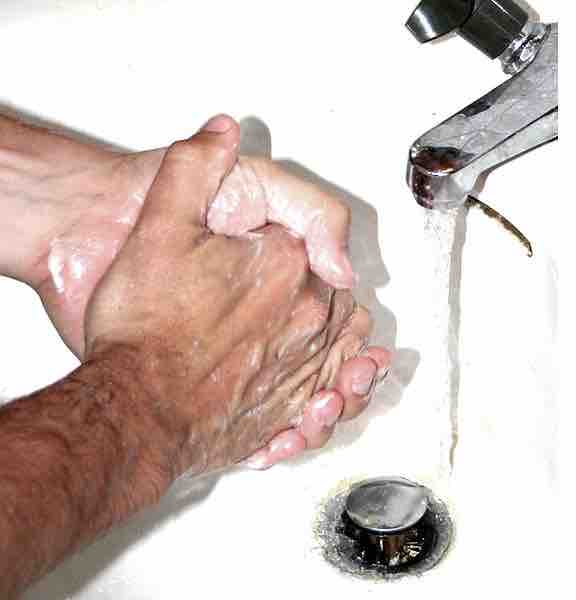For infecting organisms to survive and repeat the infection cycle in other hosts, they (or their progeny) must leave an existing reservoir and cause infection elsewhere. Defining the means of transmission plays an important part in understanding the biology of an infectious agent and in addressing the disease it causes.
Infectious organisms may be transmitted either by direct or indirect contact. Direct contact occurs when an individual comes into contact with the reservoir. Indirect contact occurs when the organism is able to withstand the harsh environment outside the host for long periods of time and still remains infective when specific opportunity arises.
Transmission may occur through several different mechanisms. Respiratory diseases and meningitis are commonly acquired by contact with aerosolized droplets, spread by sneezing, coughing, talking, kissing, or even singing. Gastrointestinal diseases are often acquired by ingesting contaminated food and water. Washing hands is an effective measure to prevent contaminating food and water . A common method of transmission in under-developed countries is fecal-oral transmission. In such cases, sewage water is used to wash food or is consumed. Sexually transmitted diseases are acquired through contact with bodily fluids, generally as a result of sexual activity. Some infectious agents may be spread as a result of contact with a contaminated, inanimate object (known as a fomite), such as a coin passed from one person to another, while other diseases penetrate the skin directly.

Washing Hands
Washing hands with soap and clean water (for at least 20 seconds) is the most effective measure to prevent the spread of infectious diseases.
Transmission of infectious diseases may also involve a vector. Vectors may be mechanical or biological. A mechanical vector picks up an infectious agent on the outside of its body and transmits it in a passive manner. An example of a mechanical vector is a housefly, which lands on cow dung, contaminating its appendages with bacteria from the feces and then lands on food. The pathogen never enters the body of the fly.
In contrast, biological vectors harbor pathogens within their bodies and deliver pathogens to new hosts in an active manner, usually a bite. Biological vectors are often responsible for serious blood-borne diseases, such as malaria, viral encephalitis, Chagas disease, Lyme disease, and African sleeping sickness. Biological vectors are usually, though not exclusively, arthropods, such as mosquitoes, ticks, fleas, and lice. Vectors are often required in the life cycle of a pathogen. A common strategy used to control vector borne infectious diseases is to interrupt the life cycle of a pathogen by killing the vector.
All of the above modes are examples of horizontal transmission because the infecting organism is transmitted from person to person in the same generation. There are also a variety of infections transmitted vertically, that is from mother to child during the birthing process or fetal development. Common disorders transmitted this way include AIDs, hepatitis, herpes, and cytomegalovirus.